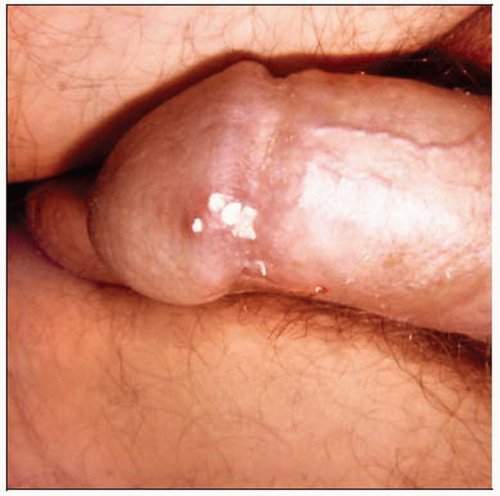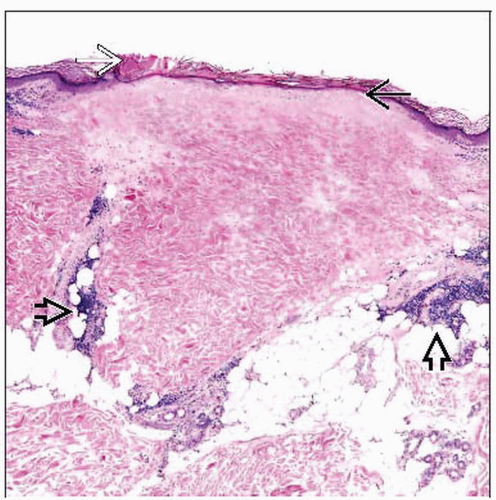Degos Disease
Brian J. Hall, MD
Bruce R. Smoller, MD
Key Facts
Terminology
Idiopathic, rare thrombotic disorder characterized by distinctive skin lesions, often associated with infarctive lesions of other organs
Multisystem (often fatal) and benign purely cutaneous forms
Clinical Issues
Typically affects trunk and proximal extremities
Can affect GI system in any area (mouth to anus) but typically affects small intestine
Death is most often due to peritonitis secondary to intestinal perforation(s)
Microscopic Pathology
Most characteristic findings in well-developed lesions
Epidermal atrophy and overlying hyperkeratosis
Underlying wedge-shaped dermal infarct
Marked endothelial swellings of venules
 This image shows a porcelain-white, well-demarcated necrotic ulcer on the penis of this patient with Degos disease. (Courtesy PMPH-USA Publishing.) |
TERMINOLOGY
Synonyms
Malignant atrophic papulosis, papulosis atrophicans maligna, lethal intestinocutaneous syndrome
Definitions
Idiopathic, rare, often fatal multisystem thrombotic disorder characterized by distinctive skin lesions, often associated with infarctive lesions of other organs (especially small bowel)
ETIOLOGY/PATHOGENESIS
Unknown
Some hypothesize it is not a distinct entity, but may be a “reaction pattern” to various vascular insults that have not yet been fully determined
CLINICAL ISSUES
Epidemiology
Age
Usually affects young and middle aged
However, has been described from infancy to 67 years
Mean age at presentation is 33 years
Stay updated, free articles. Join our Telegram channel

Full access? Get Clinical Tree






